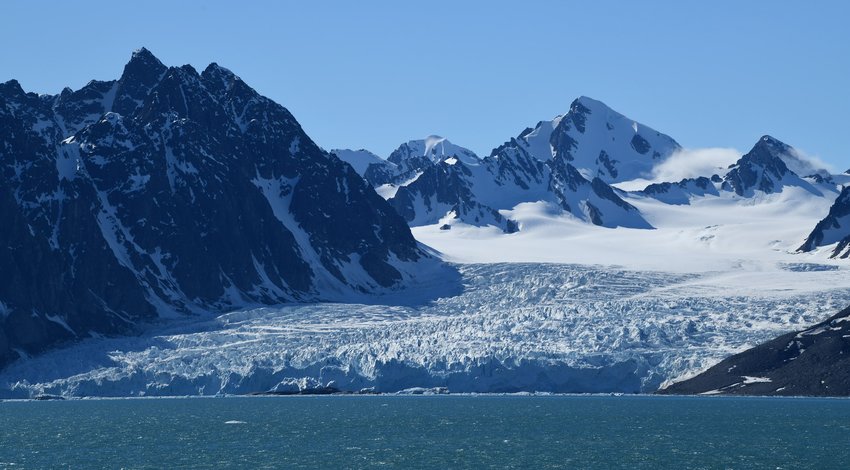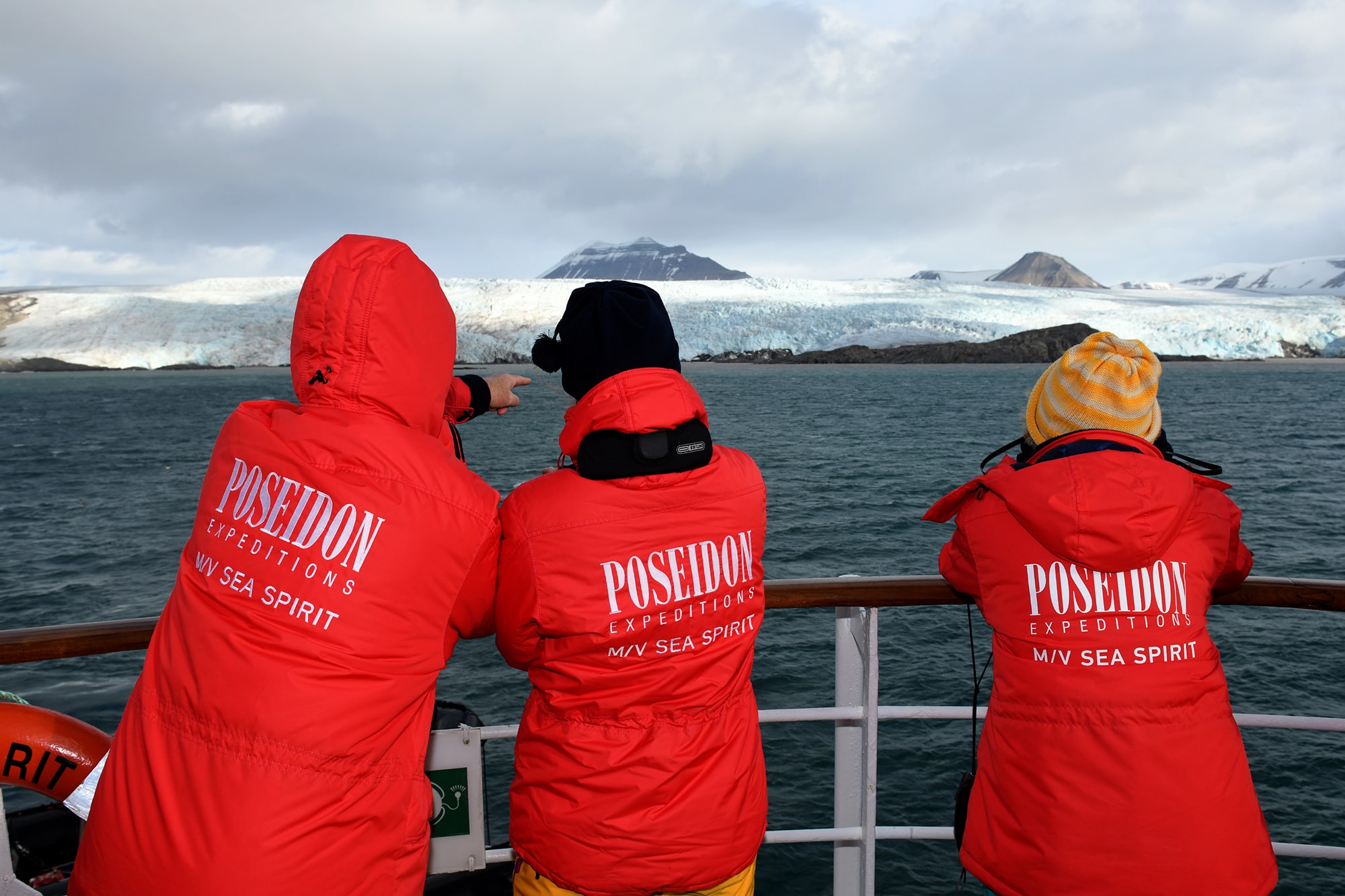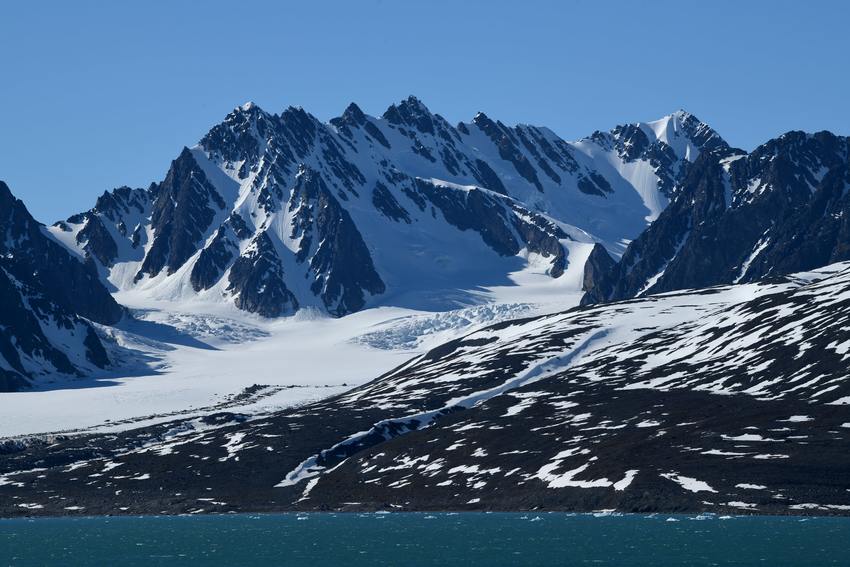Ice is Nice: Part 1 - Glaciers
7 December, 2022

Ice is a defining element of the polar environment. It is also a quintessential aspect of the polar expedition experience. On a cruise to the Arctic or Antarctica, you will likely see all kinds of ice, including glaciers, icebergs and sea ice. In preparation for your voyage into the icy realms, let’s take a closer look at how these ice features are formed, starting with glaciers.
The formation of a glacier starts with the sun. Solar radiation heats the oceans and causes seawater to evaporate into freshwater vapor, which rises into the atmosphere to form clouds. The water now has all the energy it needs to reshape the world. The sun is also responsible for the weather patterns that move clouds from the tropics to colder regions. When clouds reach areas where the air temperature is at or below freezing (0 degrees Celsius or 32 degrees Fahrenheit), the water vapor condenses into delicate ice crystals. These crystals accumulate in the air to form snowflakes or other frozen precipitation, which fall from the sky.
Snow that accumulates on the ground during winter often melts away during the summer. However, any snow that remains through the summer will be covered by more snow the following winter. If this happens year after year, the snow pack will get deeper and deeper. Snow at the bottom of the pack becomes compressed by the weight of the snow on top. This pressure causes the tiny snowflakes to recrystallize into larger and larger ice grains. Air is forced out as the snow gradually transforms into solid ice. Eventually, the mass of ice becomes so large and heavy that it begins to move under its own weight. It is now a glacier.

If the climate is cold enough, glaciers will continue to thicken and expand until they completely cover the landscape in the form of ice caps, such as those found on the various Arctic islands of Svalbard and Franz Josef Land. The largest masses of glacial ice on the planet were formed during the last Ice Age and persist today as ice sheets in Greenland and Antarctica.
Energy from the sun, which originally elevated water into the sky to become clouds and then snow, is now released as powerful kinetic energy as glaciers grind down the mountains toward the sea. Glaciers are quite literally rivers of ice. Slow as they are, they are responsible for moving vast quantities of rocky material from higher to lower elevations. Over thousands of years, bedrock is scoured and carved by rocks in the icy grip of relentlessly moving glaciers, creating spectacular horned mountaintops and broad U-shaped valleys.
Glaciers that flow all the way to the sea are called tidewater glaciers. These are most common in Greenland, Svalbard, Franz Josef Land, South Georgia, South Shetland Islands and the Antarctic Peninsula. In Svalbard, the massive Austfonna ice cap reaches the sea along a glacial front 180 kilometers long—the longest in the northern hemisphere. In parts of Antarctica, the continental ice sheet extends out onto the sea to become a floating ice shelf. Such glacial fronts are the birthplace of icebergs.
Ice can be trapped in glaciers for hundreds or even thousands of years before finally being released as meltwater back into the ocean whence it originally came. When glaciers lose more ice through melting than they gain from snowfall, the terminus of the glacier retreats away from the sea and back into the mountains. Retreating glaciers reveal a stark and beautiful landscape of deep fjords, serrated mountain ridges, glacial moraines and meltwater lakes. Witnessing mighty glaciers and the stunning landscapes they create will certainly be a highlight of your cruise to the Arctic or Antarctica.
